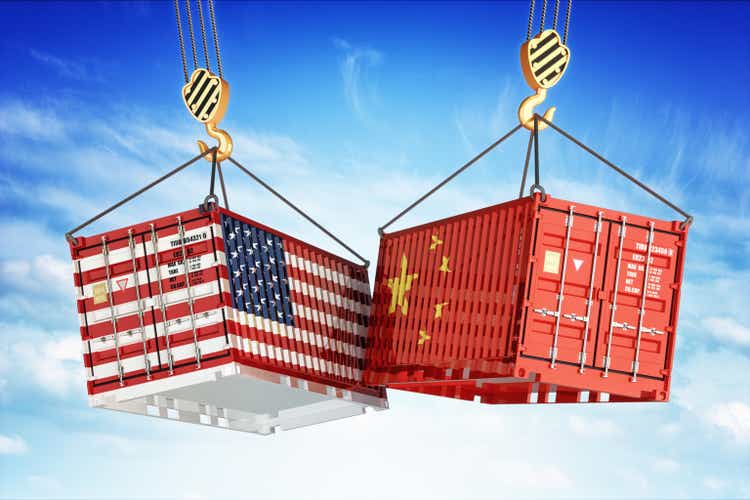
cybrain
The saga of global economic supremacy is about to witness another twist as the U.S. prepares to fortify its domestic industries and workforce against foreign rivals. This impending move signals a significant juncture for President Biden, who has opted to retain all of the previous administration’s stringent tariffs on approximately $370 billion worth of annual imports from China. Not only will these tariffs persist after an extensive policy reassessment, but additional protectionist strategies are slated for announcement during a White House ceremony on Tuesday.
Forecasts and musings: Rumors abound about a fourfold increase in tariffs on Chinese electric vehicles, soaring from 27.5% to a hefty 102.5%. Concurrently, levies on the solar sector are set to escalate, with expectations of a twofold or threefold surge looming over other spheres such as steel, aluminum, batteries, and other eco-friendly commodities. Critics view these tariffs as emblematic gestures, arguing that extant duties have already effectively barred the entry of Chinese automobiles into the American market, whereas numerous Chinese solar enterprises circumvent tariffs by dispatching their products to the U.S. via intermediary hubs in Southeast Asia.
A considerable controversy has been brewing in recent times regarding the potential repercussions of additional tariffs on the battle against inflation. However, this debate now appears somewhat inconsequential as the peak of inflationary pressures has subsided, coinciding with the onset of an intense election season in the U.S. Election campaigns in crucial battleground states like Michigan’s focus on automotive industry protection and Pennsylvania’s emphasis on the steel sector underscore the significance of safeguarding industries. Both political factions are keen to address pertinent issues such as national security, the decline of manufacturing jobs, and vulnerabilities within the supply chain. Moreover, substantial financial backing has been allocated to key American sectors through substantial expenditure packages like the Inflation Reduction Act and CHIPS and Science Act.
Points of Interest: The U.S. has issued warnings about China’s inundation of the market with subsidized goods, prompting Treasury Secretary Janet Yellen to venture to Beijing for discussions on “unfair trade” and “industrial overcapacity.” An underlying apprehension is that protective trade policies may eventually blur lines with industrial directives. In response, China’s Foreign Ministry spokesperson, Lin Jian, has pledged that Beijing will “take all necessary measures to defend its rights and interests.” Should China retaliate, potential targets could include American agricultural exports or restrictions on critical components that the U.S. lacks in its domestic supply chain, such as rare earths.
Exploring Electric Vehicle Stocks: Investors may want to keep an eye on Tesla (TSLA), Ford (F), General Motors (GM), Stellantis (STLA), Nio (NIO), XPeng (XPEV), and Li Auto (LI).
Delve into Solar Companies: Companies to watch in the solar sector include First Solar (FSLR), SunPower (SPWR), Tesla (TSLA), Enphase Energy (ENPH), Sunrun (RUN), SolarEdge (SEDG), Canadian Solar (CSIQ), JinkoSolar (JKS), Bloom Energy (BE), NextEra Energy (NEE), Sunnova Energy (NOVA), Brookfield Renewable Partners (BEP), Ormat Technologies (ORA), SolarWindow (OTCPK:WNDW), Daqo New Energy (DQ), ReneSola (SOL), Maxeon (MAXN), PG&E (PCG), Consolidated Edison (ED), Dominion Energy (D), Duke Energy (DUK), American Electric Power (AEP), Exelon (EXC), Entergy (ETR), Alliant Energy (LNT), NextEra Energy (NEE), and Southern California Edison (EIX).





